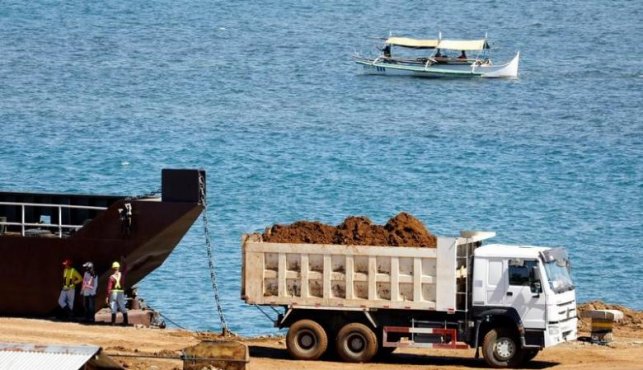
The Philippines' environment ministry has allowed eight suspended nickel ore miners to ship out stockpiles of mined ore, sources told Reuters, temporarily boosting supply from the world's top exporter of the raw metal after a major crackdown.
More than half of all mines in the Philippines have been ordered to permanently shut to protect watersheds in an eight-month campaign led by Environment and Natural Resources Secretary Regina Lopez.
Allowing the halted mines to sell their stocked nickel ore is aimed at limiting the potential build up of silt in nearby waters, an official with knowledge of the order said, rather than the government toning down its campaign.
The volume of nickel ore stocks from the mines may well exceed 1 million tonnes, or about a month's worth of consumption by top buyer China, said the official, who declined to be named because he is not authorised to discuss the matter publicly. The total would likely be less than 5 million tonnes, he added.
Daniel Hynes, commodity strategist at ANZ Bank, said he did not expect the temporary boost in Philippine supply to be a big drag on nickel prices.
"It certainly doesn't remove the long-term issues around security of supply and the closures of other operations," Hynes said.
Still, three-month nickel on the London Metal Exchange fell 1 percent to $9,935 a tonne by 0600 GMT, the biggest decliner among base metals on Friday. Nickel has lost more than 9 percent this month, following a 10 percent spike in February when Lopez ordered the mine closures.
Environmental hazard
In a memorandum issued on March 6, a copy of which was reviewed by Reuters, Lopez allowed the eight suspended nickel miners to remove their stockpiles from all mining areas.
The order also required the mines to put 2 million pesos ($39,730) per hectare of disturbed land into a trust fund "to further mitigate the adverse impacts of the mining operations to the environment and to the affected communities."
Environment Undersecretary Philip Camara confirmed the memorandum is valid, a spokeswoman for the ministry said.
The eight miners, including Hinatuan Mining Corp - a unit of top nickel ore producer Nickel Asia Corp - were among 10 suspended for environmental breaches during a July-August audit of the nation's 41 mines.
Lopez last month ordered 23 mines closed for good, including six of the eight suspended nickel producers. Many of these mines have appealed to President Rodrigo Duterte and continue to operate while waiting for Duterte's final ruling.
The suspended miners had asked Lopez's permission to remove the mined ore and were granted it, the first official said.
"It's an issue of environmental hazard. If we don't allow it then it will just be a hazard so it needs to be removed," the official said. Another official with the environment ministry confirmed the mines can ship out the ore.
Two of the suspended mines are owned by construction-to-power firm DMCI Holdings Inc, which was planning to restart the mines this month while it awaits the outcome of an appeal, in a test of rules around the crackdown.
Hendrik Martin, manager at DMCI's nickel mine in Zambales province, said the company had received the order from the environment agency and would likely sell its 200,000-tonne stockpile to China.
DMCI Mining Corp President Cesar Simbulan separately said stockpiles at its Berong Nickel Corp in Palawan province stand at around 1 million tonnes. Hauling of the stocks from the Zambales and Palawan mines to the ports had yet to start, he added.
Nearly all of the Philippines' nickel ore is sold to China where it is used to produce stainless steel. Philippine shipments reached 30.5 million tonnes last year, or 95 percent of China's total imports of the raw material.









